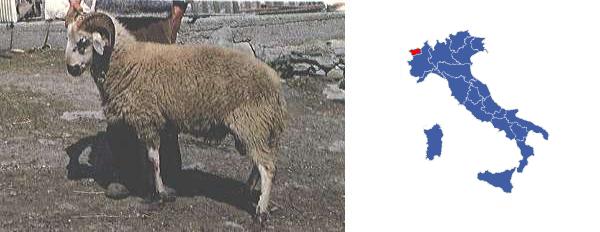Rosset
Italian breeds of sheep
Origin and diffusion
The Rosset is a transhumant breed found in western Aosta Province, chiefly in the three tributary valleys of the Dora Baltea: Val Grisanche, Val di Rhemes and Val Savaranche. Small numbers are found with other breeds in several valleys of rivers flowing south from Mt Fallere, and in the Val Pelline. The sheep, kept in small flocks of from five to ten head, are stall-fed during the winter at the farmsteads in the valley. In the summer, the flocks of many owners are combined into bands of about 500 head and taken with cattle up the mountain slopes where they graze, tended by professional shepherds. In mid-September they are returned to the owners in the valley.
Morphological and economic characteristics
Size: medium
Height at the withers:
- Male: 65-75 cm
- Female: 60-70 cm
Weight:
- Male: 60-70 kg
- Female: 50-55 kg
In appearance, the breed resembles Savoiarda (Savoy). The sheep are relatively small. The legs are short and sturdy. The coat was yellow-white with reddish-brown spots around the eyes and the lower parts of the legs. The thin tail hung to below the hocks. Both sexes are polled; it was reported that rams sometimes are horned.
Uses: meat, wool.
Most income is derived from the sale of lambs for slaughter, and a much smaller part from wool sheared during November and April. Lambs weigh 2 kg at birth, 8 kg at one month and are sold for slaughter at three months and 18–29 kg. Reproduction: ewes lamb once per year; twins are common, and the lambing rate was reported to be about 160 percent.
Rosset (photo www.assonapa.com)
 Rosset (photo www.regione.piemonte.it)
Rosset (photo www.regione.piemonte.it)

